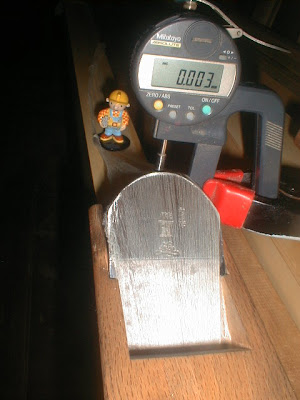Just been on utube watching some very interesting stuff on Japanese planes. What struck me is that for European planes we spend a lot of time and effort flattening the whole sole. The Japanese on the other hand deliberately set up their Wooden planes to have two or three points on the sole touching the stuff to be planed, just before the mouth and the foot or mouth, foot and nose which they setup flat and parallel to each other. Between these touch points they hollow out the sole slightly.
Does anyone know why they do this and why our european planes don't replicate this system?
Initially I thought...poppy ****!.....they don't know anything about planes, then after thinking about it, I could not work out the merits of both approaches so thought I'd ask the forum for your thoughts.
Does anyone know why they do this and why our european planes don't replicate this system?
Initially I thought...poppy ****!.....they don't know anything about planes, then after thinking about it, I could not work out the merits of both approaches so thought I'd ask the forum for your thoughts.

































